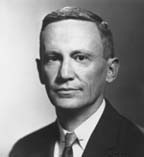Schwarzschild, Martin (1912–1997)
Martin Schwarzschild was a German-born American astronomer, son of Karl Schwarzschild, who is best remembered for his work on the evolution of stars and galaxies. He earned his PhD at Göttingen (1935), left Germany in 1936, researched and taught at Oslo, Harvard, and Colombia, and, after serving in the US Army in World War II, joined the faculty of Princeton University in 1947. His work on stellar structure and evolution led to improved understanding of pulsating stars, differential solar rotation, post-main sequence evolutionary tracks on the Hertzsprung-Russell diagram (including how stars become red giants), hydrogen shell sources, the helium flash, and the ages of star clusters. His 1958 book, Structure and Evolution of the Stars, taught a generation of astrophysicists how to apply computers to the testing stellar models. In the 1950s and '60s he headed the Stratoscope projects, which took instrumented balloons to unprecedented heights, to make solar, planetary, and deep-space observations. In his later years he made significant contributions toward understanding the dynamics of elliptical galaxies.
 |


